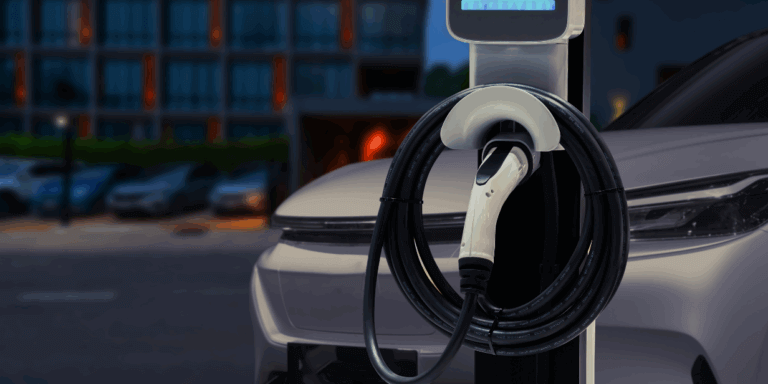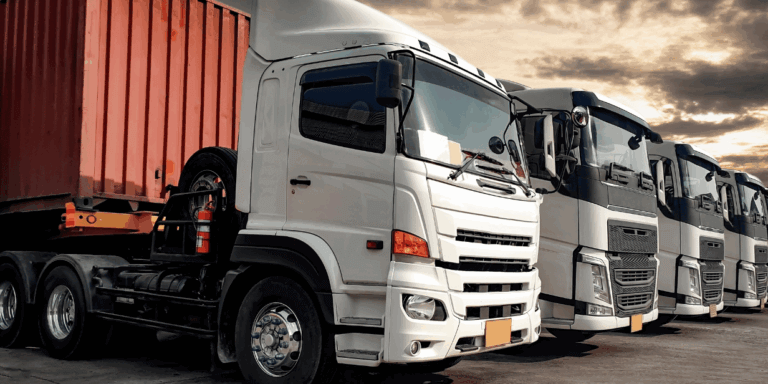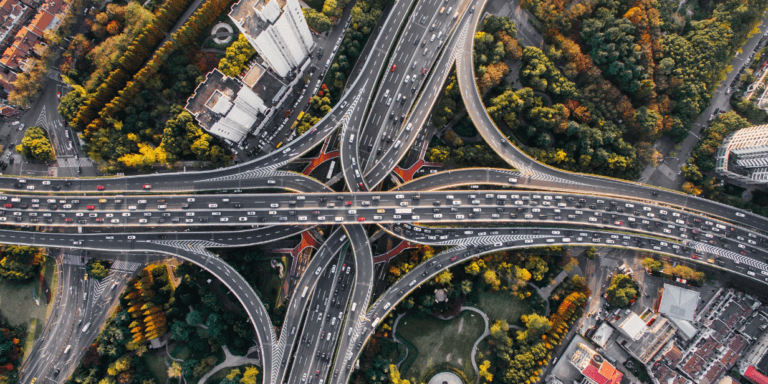If you raise or manage livestock, you face ongoing challenges when it comes to increasing productivity, cutting costs and growing profit margins. While RFID has been proposed as a possible solution, it has drawbacks. You might not have realized these advantages of using ALPR over RFID were steering you right in the face.
Cow RFID Tags are No Bull
I know, we totally butchered that headline, but the steaks really are high when you’re talking cattle management. People have been using radio-frequency identification, commonly called RFID since the 1970s.
Basically, users can attach a tag to livestock, merchandise or anything else they want to track to give that object a unique identifier. RFID tags might be applied to:
- Medical equipment like surgical instruments.
- Train cars on railway systems.
- Maintenance equipment.
- Warehouse merchandise to facilitate logistics.
RFID tag providers advertise that their solution provides real-time data to help decision-makers better understand what’s going on with their livestock, merchandise or facility. With that insight, the hope is they’ll experience improved efficiency and fewer data errors. Retailers also use RFID tags to prevent theft.
The technology has a lot of applications. It’s currently in use for everything from pet identification and location to keyless entry. But it isn’t a perfect solution when it comes to tracing livestock.
Black and white dairy cow’s head. Source: Pexels.
RFID Tag Drawbacks – Not Always a Cash Cow
After taking stock of the situation, some ranchers are looking for cow RFID tag alternatives because they have a beef with tag drawbacks. When members of your herd aren’t traceable, unvaccinated animals, lost livestock and reduced profits could lead to udder disaster.
RFID technology works using a tag that contains a microchip and a very small radio antenna, a reader, and a computer. All of the parts must function correctly for accurate, dependable data collection.
- Liquids Disrupt Radio Signals – If you’re looking for livestock when it’s soaking in the pond or in heavy rain, the signal from ear tags might not make it to your reader. They’re also susceptible to interference from metal, so your squeeze shoots, headgates, panels, galvanized bale feeders and metal water troughs can all get in the way.
- Missing Tags – Sometimes owners or managers put costly RFID ear tags on their livestock, only to find later that some animals need re-tagging. A new tag is expensive, and there’s a need to bring original RFID tag data forward to the replacement. Bison are especially hard on tags.
- Unreadable Tags – Sometimes tags become damaged because of manufacturing defects or mishandling. Users have the headache of figuring out whether the problem is with the ear tag or the reader and replacing what doesn’t work.
- Technology Learning Curve – Different types of tags, RFID frequencies and RFID equipment can at first be a challenge to grasp. Buy-in increases if you need to train multiple employees.
There’s no sense investing in technology that could end up milking you dry when there’s a more accurate and cost-effective solution with Plate Recognizer’s cow RFID tag alternative.
ALPR captures multiple tags in the same image. Source: Pixabay.
ALPR Advantages Over RFID – Why Our Clients are Taking Stock
We developed Plate Recognizer’s automatic license plate recognition (ALPR) software to capture, organize and gather insights from vehicle license plates, but clients soon started using it in a way we didn’t expect – as a cow RFID tag alternative. Here are the reasons why.
Reason #1: ALPR Costs Less
As we’ve already mentioned, RFID ear tags are expensive, especially if you need to keep track of your livestock over distances greater than 18 inches. Until recently, APHIS and USDA provided official National Uniform Eartagging System (NUES) ear tags for free as they were available, so you might have already tagged your herd with them at no cost. Even if you didn’t get your tags when they were available for free, regular ear tags are easy to find and inexpensive to purchase.
An Oklahoma State University paper weighed the cost vs. benefits of RFID tags and summarized, “One reason cow-calf producers have been justifiably reluctant to participate in a whole chain traceability system is that it was not clear that the benefits would be greater than the costs.”
Depending on the type you buy, RFID tags cost between $2.00 and $5.00 per head, so tags alone for a herd of 200 would be between $400 and $1,000. And some ranchers estimate as much as 80% of cattle will lose them.
RFID readers cost an additional $1,000 to $1,300 per unit, so if you had four stations for your 200 cows, you might need to invest as much as $5,200 to get started. Most ranchers also need a digital system into which they can enter traceability information.
Contrast that with the cost of Plate Recognizer with the same 200 cattle and the same four stations. Use the ear tags your cattle already have and purchase one camera per station at around $300 each. Then, add one Plate Recognizer Snapshot SDK per station for only $50/month each.
Our ALPR works with ear tags the same way it does with license plates. Mount cameras in the areas you want to monitor to capture ear tag data and transmit it to your database. As you can see from our pricing page, Plate Recognizer is a cost-effective cow RFID tag alternative, and we wouldn’t steer you wrong.
Reason #2: ALPR is an Easy to Manage Cow RFID Tag Alternative
RFID tags are more likely to malfunction or need a battery replacement. With regular ear tags, there’s nothing to break. No batteries run down and there are no components that can stop working. Our Snapshot works on images that are:
- Blurry
- Low resolution
- Wet or dry
- Taken in low light or bad weather
- Far away
- Containing multiple tags in the same image
- Unique, colored or mixed fonts
- Inputted in a variety of formats
Livestock ear tag. Source: Pixabay.
Reason #3: Easier to Deploy Plate Recognizer Than RFID
If your livestock already has regular ear tags, all you have to do is put up inexpensive IP cameras in the areas you want to monitor. That’s it. You don’t need any other equipment, and you could be up and running in under an hour.
Reason #4: Friendly Support
Once you apply RFID tags and buy the equipment to read them, if you have a problem you’re on your own. It’s easy to get started with Plate Recognizer, and we’re always here to provide support or answer questions if you need us.
Reason #5: Added Security
RFID readers, transponders, computers, tags and other equipment have the sole purpose of tracing the movement of your livestock. Even when they do that without errors or malfunctions, that’s all they do. Choosing ALPR as your RFID cow tag alternative allows you to use the same equipment for both livestock management and property security.
Configure it to send you alerts if unauthorized vehicles show up on your property, no matter what time of day it happens. If you notice suspicious activity, vandalism or theft, check your cameras for a record of what occurred.
Security camera on metal building. Source: Unsplash.
How Farmers and Ranchers Can Use ALPR
Using ALPR as a cow RFID tag alternative is a budget-friendly choice for traceability, unique animal identification and disease outbreak prevention. Plus, the digital history of each animal can act as evidence of how it was raised responsibility using sustainable methods.
Save Time and Money
RFID tag makers suggest scanning individual animal tags when you vaccinate them. That’s not always easy to do when you’re dealing with large livestock numbers or your animals are skittish or fractious.
It’s much easier to mount a camera near your cattle chute to document when animals receive vaccinations. You deliver vaccines in less time, have a reliable record of livestock vaccinations and the person administering them can pay more attention to the animal’s comfort and their own safety.
Using ALPR as your cow RFID tag alternative allows you to track grazing patterns and water consumption. Replace handwritten records with hard data for more informed decision making, better efficiency and improved profits.
Or, let’s say you want to monitor heifers in their third trimester so you can provide supplementation and, if needed, support during delivery. Unless your property and your herd is small, it’s impractical to walk, ride or drive its entirety every time you want to check on your expectant mothers.
It’s much simpler to receive photos or videos that show her real-time condition and location. You save time and gas and are still able to protect the health of your livestock.
Isolate Possible Disease Threats
The U.S. Department of Agriculture says knowing where diseased or at-risk livestock are and where they’ve been is the key to rapid response and containment. If you own cattle, bison, horses and other equine species, poultry, swine, sheep, goats or captive deer and you transport across state lines, you’re required to have a way to identify them and provide them with an Interstate Certificate of Veterinary Inspection (ICVI).
Animals get sick. If there’s an outbreak, the best way to stop the spread and protect healthy livestock is through tracing sick animals’ movements to contain the disease. Plate Recognizer allows you to do just that.
Herd of cattle grazing. Source: Unsplash.
Prove Sustainability
In recent years, shoppers have shown again and again they’re willing to pay more for sustainable products. Up to 73 percent of Millennials said they’d pay a higher price to support companies who act toward animals, employees and the earth in a way that supports an environmentally friendly future. With Plate Recognizer, you can search for a cow’s ear tag, see all the places he or she has been and at what times throughout its lifetime with our ALPR dashboard.
If you are responsible in the way you manage your natural resources, invest in people and the community and manage livestock in a way that ensures their health and welfare, your products could be worth more. Restaurants and grocery chains are seeking out quality beef products from stakeholders who focus on reducing waste and improving the environment.
If you’ve invested in protecting your land and your animals from herbicides, pesticides and unnecessary hormones and antibiotics, and you can prove each member of your herd has lived its life in healthier conditions, those animals are more desirable for meat or dairy. If you manage livestock in a way that reduces agricultural runoff, recycles nutrients and embraces diversity, you deserve to receive money back for your investment.
With ALPR, each animal has a digital history. It isn’t just data, it’s a backstory of sustainability.
How to Learn More
If you’d like to know more about Plate Recognizer as a cow RFID tag alternative or you’d like a free trial of Snapshot SDK, we’re here to help. Contact us and we’ll respond within 24 hours, even on the weekends.
So moooove over RFID, ALPR is the better alternative!







